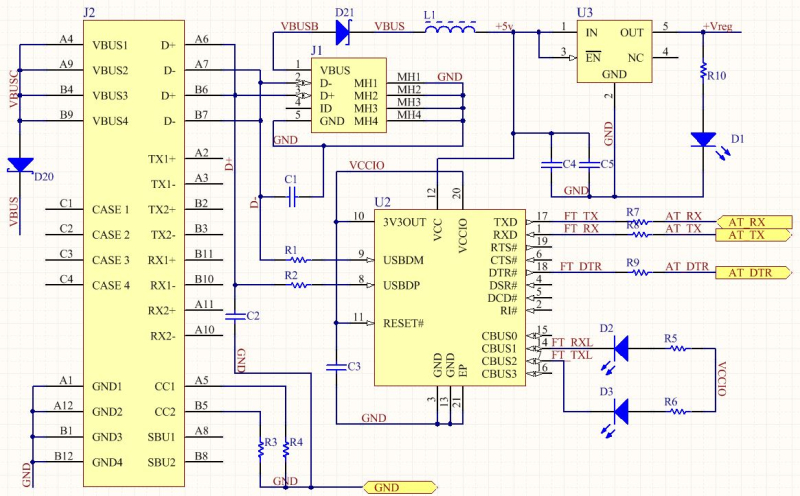Is it time for USB Type C?
The USB 3.1, type C standard have been around long enough such that the connectors and chips are readily available. But, it's a more complex set up and may have far more capabilities than is needed in your design. It's got quite a few more pins and types of signals. If you don't need all that, should you still make the plunge?
Guest blog by Duane Benson
There are reasons other than just the higher speed data transfer. Two that might be desired, even with a small microcontroller that's perfectly happy at USB 2.0 speeds.
First, it's fully reversible. No more wrong orientation when trying to plug in the cable. The light blue pins, above, are for USB 2.0 D- and D+. They will match up in either orientation.
Second, it can deliver a lot more power: up to 3 Amps at 5 volts in standard configuration. With the addition of a small amount of intelligence to the cable, the standard allows for 5A, at up to 20V.
The CC1 and CC2 pins (configuration channel) are used to identify the cable compatibility. For example, the circuit shown, CC1 and CC2 have 5.1K resistors pulled down to ground. That configuration indicates that this is a device, not a power source. Other resistor configurations are used to indicate supply and non-legacy use.
In this circuit, I've put a legacy USB 2.0 Micro B connector, and a USB 3.1 type-C connector in an either or configuration. That'll help me while I still have more Micro-B cables than C cables.
J1 is the Micro-B connector and J2 is the new Type-C connector. R3 and R4 are the 5.1 K Ohm pull-down resistors. U2 is an FTDI FT201X USB to UART chip. It's a USB 2.0 chip, but that's perfectly fine in this configuration.
Diodes D20 and D21 prevent reverse current from one cable from going up the other. I could have used a few Mosfets to keep the D+ and D- lines from stepping on each other, and to give one cable a priority over the other, but I left that circuit out for simplicity.
It's important to note that I haven't yet built and tested this design yet, so consider the USB spec to be the authority, not me.






